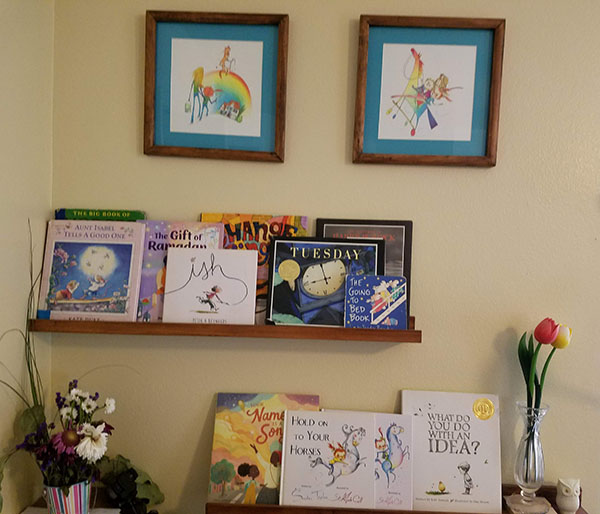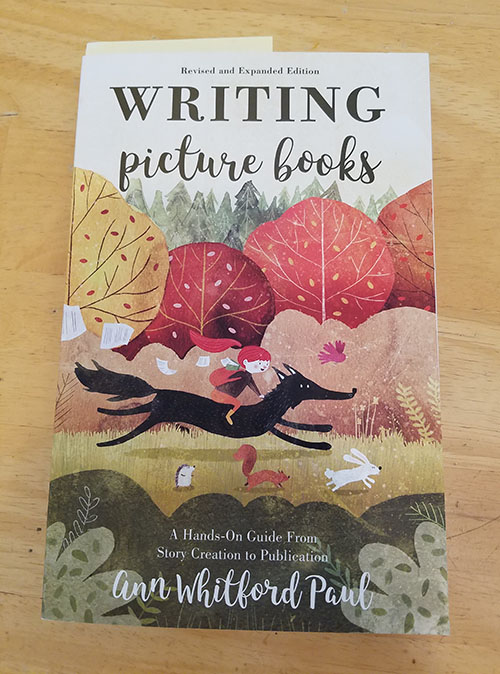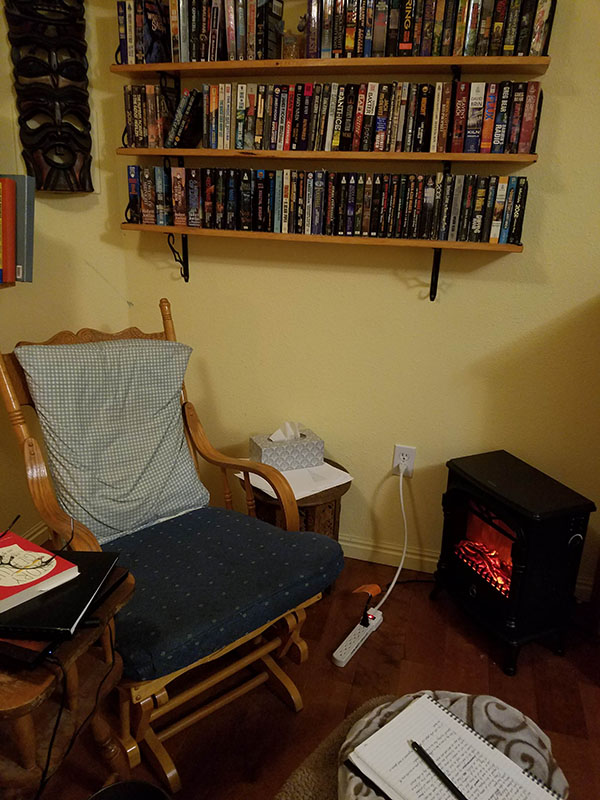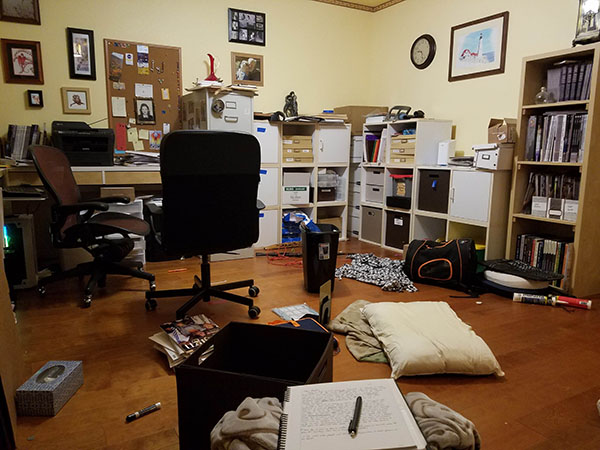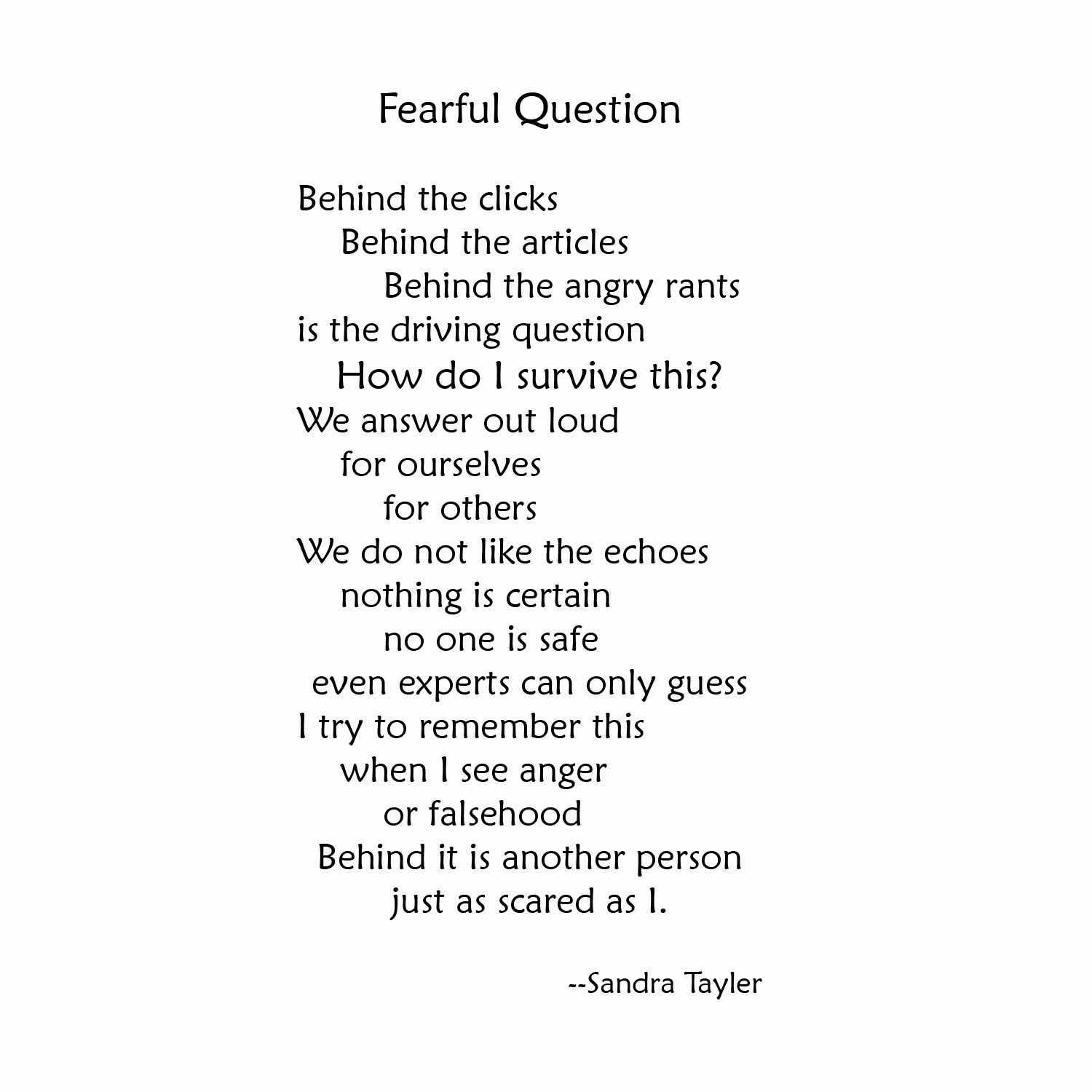I have an office, a room in my house that I can arrange however I wish. Sometimes I tend the arrangement of my office space, making plans, moving things around, trying to balance the necessary things with the beautiful things and with the items which have drifted into my space because they don’t have anywhere else to belong yet. My office ends up being an eddy in the household. A place where random things come to rest. These things accumulate until the space is so cluttered as to be almost unusable. I sometimes tell myself that this is why I don’t use my office much. It is too cluttered.
I have a secondary office in the front room. It is a chair sitting next to a TV table piled with my laptop, my phone charging station, stacks of books I intend to read, notebooks I grab for writing thoughts down, and loose papers where I wrote notes when I couldn’t get to a notebook fast enough. This space is unlovely, but contained. I sit in it every day, seamlessly moving from household administration to creative work. All the other people in the household walk into this space and talk to me. They don’t intend to interrupt my work, but the space is public. It is where they come to eat and be social. On the third time I’m interrupted mid-written-sentence, I wonder why I don’t retreat to my office, to a space that is more private where they’ll think before intruding. But it feels dark down there in the basement, despite the cheerful yellow paint on the walls. Despite the art I selected and arranged. Despite the leaf trim I hand painted which adorns the top edge of the room. Lack of windows and natural light is another reason I give for not using my office.
I have a plan about my windowless office. I heard of a means to make a faux window. I bought the supplies from the light board to the curtains. All the pieces are sitting there among the other clutter. Waiting for me to move the dresser, so I can remove and re-space the shelves, which will let me reorganize the books, which will let me install the faux window, and create a cozy space that I will surely start using. I can put the cozy faux-fireplace space heater right under the window. That would be the same heater I bought to make the space feel cozy so that I would start using the space more. I keep trying to lure myself down there. It keeps not quite succeeding.
My desktop computer resides in my office. I sit at it to print postage, to do the weekly accounting, to work on layout and graphic design. I sit there several hours per week, sometimes as many as twenty or thirty hours per week depending on the shape and urgency of projects. I sit at the desk covered with stacks of paper intended to remind me of coming tasks, next to my arrangement of small artworks on the wall. Most of the art is small prints or originals purchased directly from artists at conventions. They make me happy when I remember to look at them instead of focusing on the work in front of me.
In the other corner is the rocking chair which used to live in my baby’s room. All four babies in turn were rocked in that chair, and then it was shuffled from corner to corner of the house after children no longer needed to be rocked. I supposed it makes sense that it ended up in my office when I wasn’t willing to let the chair go, even though all the babies had become adults. I sit in that chair every week for two hours while I attend an online writer’s date. My writer friends see this little corner with its library of books and the wooden carved mask which we bought on our trip to South Africa in 1999, another object that ended up in my office because it carried to much emotional freight for us to let it go, but for which we couldn’t find any other place in the house for it to belong.
So I guess I do use my office. I use it for specific tasks and to store specific things. Yet it feels like I don’t. It feels like I sit in the front room, in the sunshine, and in different clutter than my office clutter, trying to write where people will walk through and talk to me. And when they do, I wonder to myself why I don’t go sit in my office. I wonder, but I don’t get up and move.
I have a tertiary office. It is my bedroom, one corner of which I’ve turned into a Zoom space. I painted that corner of the room a different color from the rest and put up decorative shelves where they can be seen on camera. Carefully placed beautiful objects adorn the space. That little corner makes me happy to see when I look at it from my bed. It isn’t comfortable for working (hence sitting downstairs for my weekly writer dates), but it is perfect for attending Zoom meetings and virtual parties. I love my Zoom corner.
Sometimes I sit on my bed to write. I prop up all the pillows and open the blinds so that I can see out into my back garden with its trees. From that spot I can stare out the window, or look at my Zoom corner. It is a quiet space where people won’t interrupt me as easily. My use of this tertiary space lends credence to the theory that the problem with my office might actually be the lack of windows. I crave natural light, particularly in the winter months.
I imagine a hypothetical office someday. Perhaps when I can claim a bedroom back from one of my children after they leave home. I imagine an office which combines all the best parts of my current offices. With a designated shelf for books I intend to read, a desk specifically for letter writing and crafting, comfortable lounging spaces for writing, natural light streaming in the window, and art I selected for myself.
If I had this hypothetical office, would I use it all the time? Or is it something else that draws me to do so much work while sitting exactly where everyone can easily interrupt me? Perhaps I have a habit of always being available because I spent so many years being the on-call parent when my kids were small. Perhaps it is in response to the fact that Howard and I have a collaborative process made up of a dozen small creative meetings throughout the day where we round up the thoughts from the just-finished task and open up the thoughts for what comes next. Perhaps it is knowing that I have to catch my people in the moments when they are in between if I want to talk to them at all. So I lurk in the place they pass through.
I don’t actually have answers, I don’t need answers, but I find the behavioral observation of myself interesting. I have three office spaces, but all of them are some level of shared. I could retreat more often than I do, but I tend not to. I could claim spaces and set boundaries around them more firmly, but I don’t. Mostly it works. I’m able to create and think and administer. So my process may be scattered and strange, but It isn’t actually a problem. I guess I’ll keep flowing with it until the need for something else emerges.
